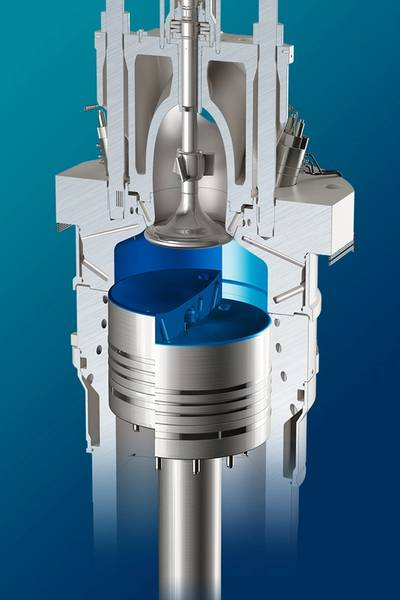WinGD, a subsidiary of CSSC, will realise the first commercial instalments of its new variable compression ratio (VCR) technology on two new dual-fuel LNG powered vessels being built for NYK Line.
A 95,000 DWT bulk carrier being built at Oshima Shipbuilding Co.,Ltd. and a 7,000 CEU pure car and truck carrier (PCTC) being built at Shin Kurushima Dockyard Co.,Ltd will be the first two-stroke powered vessels that can dynamically optimise combustion depending on the fuel being used – delivering improved emissions, fuel economy and fuel flexibility.

VCR technology was introduced in June after more than a decade of co-development with Mitsui E&S DU (MESDU). The simple hydraulic solution mounted on the piston crosshead represents a breakthrough in two-stroke engine design as the first concept enabling compression ratio to be adjusted, delivering significant greenhouse gas emissions reductions in both diesel and gas modes (around 6% and 3% respectively).
Running in diesel mode, this equates to a saving of around 1,555 tonnes of CO2e a year – the equivalent of taking 338 ‘typical passenger cars’ off the road for a year, according to US Environmental Protection Agency figures.
The first reference, the Oshima-built bulk carrier, is expected to be delivered in 2025. It will be powered by a WinGD 6X62DF-2.1 engine. The PCTC is expected to be delivered in 2026, powered by a WinGD 7X62DF-S2.0 engine.
The PCTC vessel will mark the first deployment of WinGD’s new 62-bore short-stroke engine. It will also be among the first to feature on-engine iCER – a compact version of the X-DF2.0 technology that offers further reductions in fuel consumption and emissions while assuring Tier III NOx compliance in both gas and diesel modes.
VCR technology is currently available as an option for 62- and 72-bore X-DF engines and has no impact on engine footprint and installation requirements.


